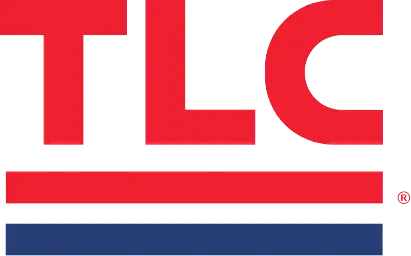The cold weather probably has you thinking about your heater and it’s important to keep your home warm for you and your family. Sometimes, your furnace has a hiccup and doesn’t work quite like it’s supposed to. We’ve compiled a list with 11 of the most common heating problems that homeowners experience. There are some things to look out for in order to make sure a small problem doesn’t become a big one.
You can also learn more about the type heater you have by viewing this article by our HVAC pros.
1. Dirty Filter
When your furnace filter is dirty, your heater can’t “breathe,” and makes it difficult to send warm air to the rest of the house. It’s not surprising that this is is one of the most common problems. Your heater might react by blowing constantly, shutting off or cause your heating bills to significantly increase.
Luckily, changing your filter is simple and something you can do yourself. It all starts with finding the right filter for your furnace. We also have a great video that walks you through how to change furnace filter. Be sure to change your filter every three months – this is crucial to both the health and efficiency of your heater.
2. The Pilot Light Goes Out or Doesn’t Come On
Most furnaces don’t have a standing pilot anymore that you can just relight if it goes out (unless your furnace is over 20 years old, in which case you should call a professional to evaluate since it’s an older unit.) In most furnaces, there is an ignition system rather than a pilot you can reach. If your furnace seems like it’s not starting, you should call a professional. An HVAC professional will be able to evaluate and repair the problem.
3. Dirty or Broken Flame Sensor
This is a common problem we see often. The furnace will turn on and off but doesn’t stay on. It cycles to attempt to start the furnace but will shut off as a safety precaution. When your furnace starts, the flame sensor has a short window where it needs to detect if a flame is present. If your furnace continued to emit gas when there was nothing there to ignite it, then it would create a buildup of dangers unburned gas. Most units are set up to go into a “safety lockout” after it’s tried three times.
The flame sensor can become dirty due to carbon build up, and the slightest amount of carbon coating can cause the sensor to misread and shut down. The only way to fix this problem is to have a licensed furnace repair company clean or replace the flame sensors. Do not attempt to open the furnace and clean on your own.
4. Thermostat Isn’t Working
For starters, make sure that it doesn’t need new batteries. Double check that you have it set to heat and the correct temperature. If there is still a problem, call an HVAC professional. Chances are that if you’ve followed these steps, then your thermostat is fine. It’s your heating system that’s having issues.
5. The Blower Runs All the Time
First check the switch on your thermostat. If it’s set to “on”, your blower will run constantly. Change it to “auto” so that it will turn itself on and off as needed when it reaches the set temperature. If it’s set to auto, you may also need to change the filter as we mentioned before. If the problem persists, it’s time to call an expert.
6. Blowing Cold Air
Make sure you have it set to “heat” before you panic – it’s easy to press the wrong button. However, it could also be blowing cold air because the flame sensor is broken or dirty.
7. Some Rooms Are Warm, Others Are Cold
Ductwork is the pathway through your home that spreads warm air. A leak in the ductwork can cause uneven heating. It’s also not uncommon in New Mexico for the ductwork to be the wrong size. It can also be because of poor design. Is your heater in the garage are on one end of the house? If so, the air has to travel farther, making some rooms warm and others cold.
Ask your HVAC professional to help you identify the real problem. They can show you your options. Maybe you need some tests done, or a two-stage furnace. Two-stage furnaces blow at high and low speeds, instead of just “on” and “off”. This can help spread the air through your house more evenly. An expert can also offer options for supplemental heating sources if your furnace isn’t centrally located in the home.
8. High Energy Bills
Have we mentioned to check the furnace filter? A dirty filter can make your energy costs go up by 15%! Nobody wants that, so change your filter every three months.
Do you have a swamp cooler? In the winter, a damper needs to be placed in the ductwork leading to the cooler. Otherwise the warm air you’ve paid to heat your home escapes to the outside and you’re just wasting energy and money.
9. Your Heater Makes Loud Noises
Banging, whirring or strange clicking noises are not a good sign. Your heater could be trying to tell you that the motor is going out. It may be slow and noisy to start up. There could also be something stuck in the ductwork like flapping tape. An HVAC professional can help you pinpoint the noise.
10. Strange Smells from the Heater
A slightly dusty smell is alright when you first turn your heater on and typically goes away fairly soon after starting it. There are other smells that you should worry about.
If you smell gas, immediately shut off your unit and go outside. Call your HVAC professional right away. This is a very dangerous situation and must be fixed immediately. Open your doors and windows to air out your house.
A metallic smell can indicate a carbon monoxide (CO) leak. While carbon monoxide is typically odorless, this metallic smell it’s telling you that it’s there. Carbon monoxide is very dangerous. Make sure that you install a working carbon monoxide alarm and change the batteries at the start of every heating season. If the alarm goes off, do the same thing you would do for a gas leak. If you experience carbon monoxide poisoning symptoms (headaches, burning eyes and/or nausea), leave the home immediately and seek medical help right away! Once you’re sure that you are okay, call the New Mexico Gas Company before returning home. They can shut the gas off and ensure your home is safe to enter. Then call a trusted HVAC repair company to repair the CO leak. The gas company will likely disable the furnace until it has been repaired by a licensed heating expert and inspected.
Other smells could be an electrical smell or a mold smell. Get these taken care. The electric smell could mean your transformer or blower is going out, and mold is a health hazard.
Don’t ignore smells.
11. Too Old
The last thing your heating system might try to tell you is “I’m too old for this”. That’s not what anyone wants to hear from their heater, but it is a possibility. The typical life cycle for a furnace is 12-15 years. If your furnace is older than 15 years, you may want to talk to your local HVAC professional about installing a new furnace. They will help you decide whether to repair it or say “Goodbye”.
Listen to your heater. By changing filters, and performing regular maintenance, you can keep it from telling you “I quit” for years to come. Since your heating system is the heart of your home’s comfort, it’s important to listen to your heater.
TLC Plumbing is a leading furnace service company in Albuquerque and is always ready to help get your heating system up and running.

